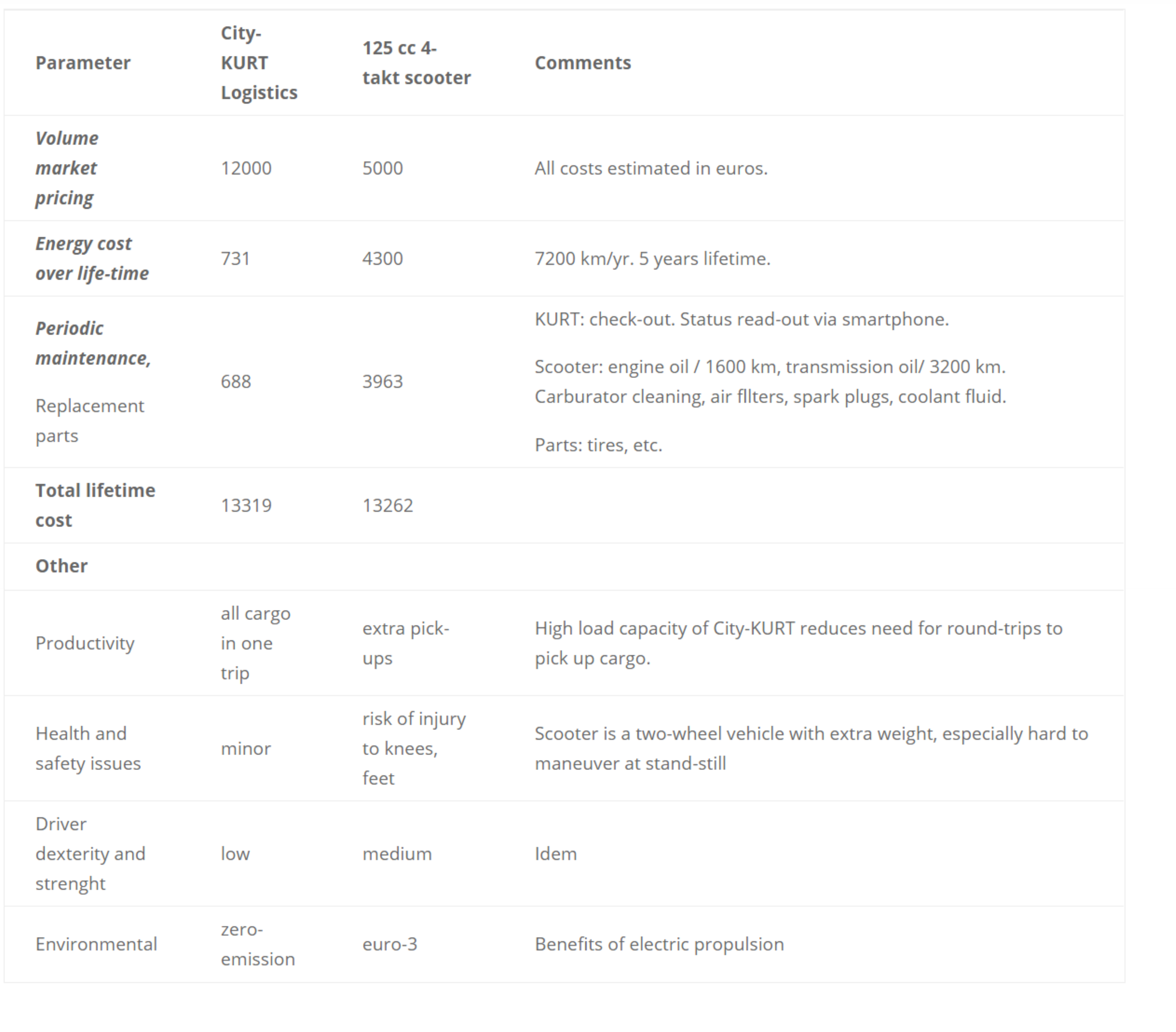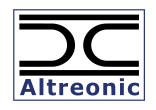Cost efficiency
Developing an electric vehicle means being part of a disruptive but challenging evolution. The competition is still largely dominated by vehicles that use combustion engines benefiting from 100 years of continuous improvement and volume production.
However what counts is the life-cycle cost as well as the total cost. The KURT vehicle has been able to bridge the gap by innovations and improvements in several domains. Its compactness and low empty weight maximise the use of the battery energy for its useful purpose, i.e. moving people and goods, not the vehicle itself. As a result, contrary to combustion engines, a KURT vehicle requires a lot less maintenance and no oil changes, reducing the running cost to the price of the electricity it requires to charge the batteries.
Hence, when buying a KURT vehicle, what counts is the Total Cost of Ownership. Calculations show that this is on par with classical vehicles. The electric KURT vehicle has many other benefits, one of which is its energy efficiency (see page on energy effectiveness) and increased productivity, comfort, safety and health benefits. The table below provides an indicative comparison (subject to change).

